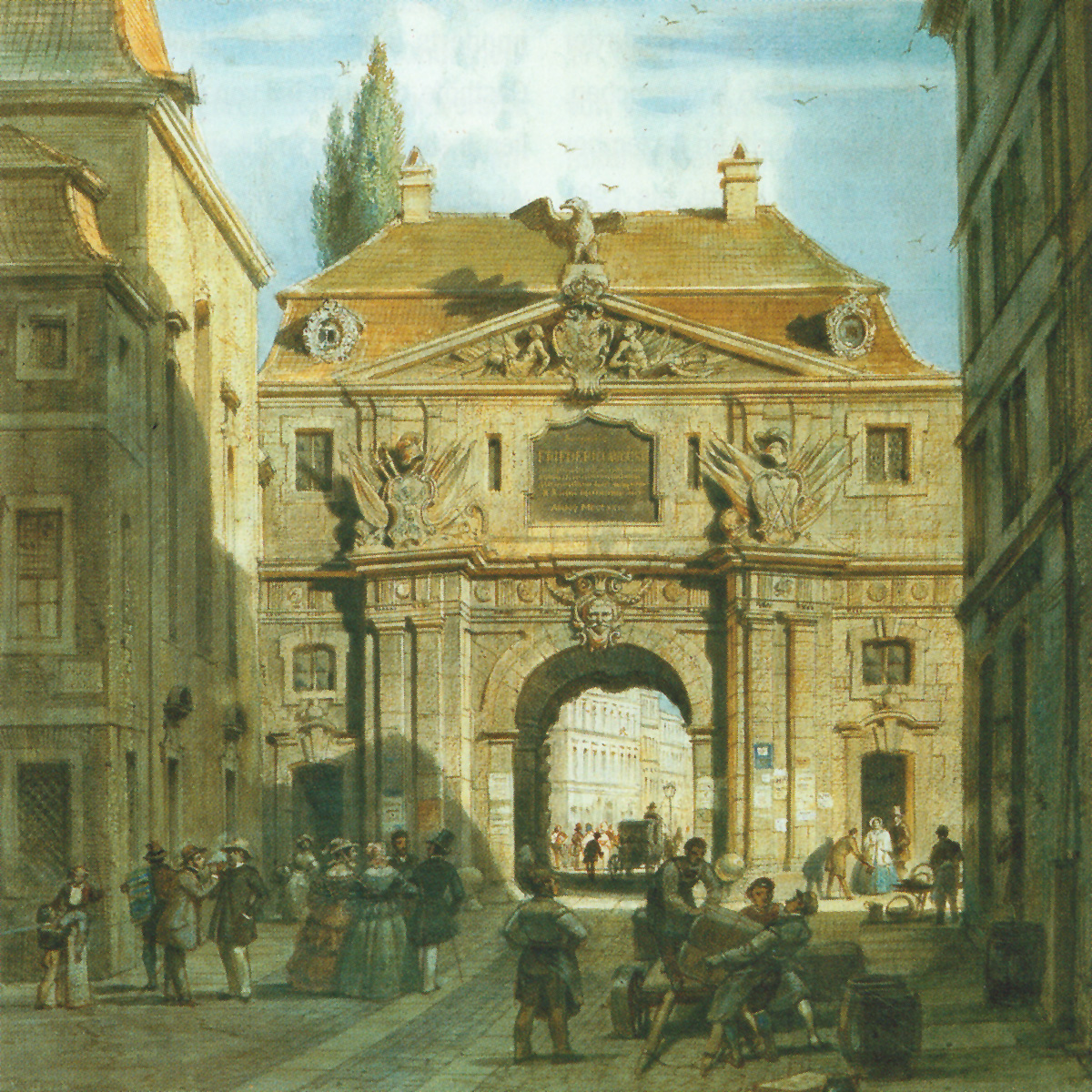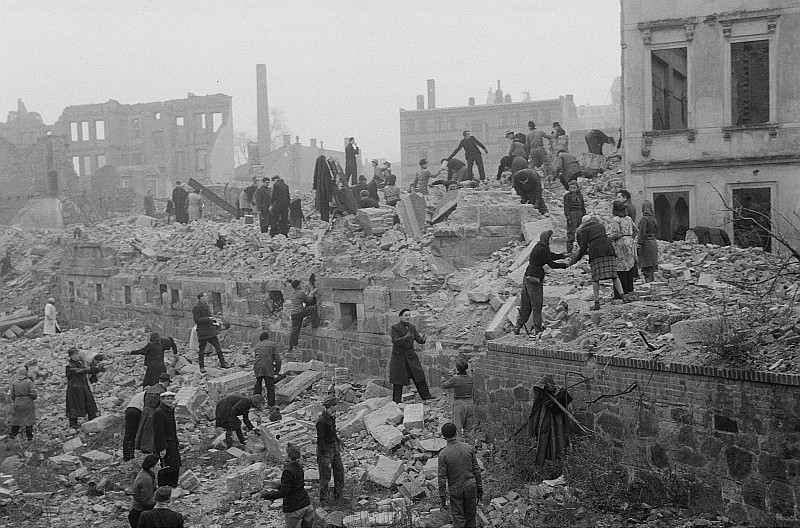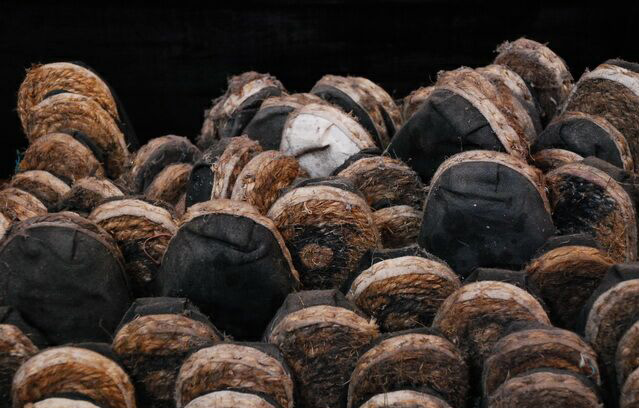|
Barfußgäßchen
The Barfußgäßchen is a long residential street in the city center of Leipzig. It connects the market with the Dittrichring and is one of the city's party miles. History In the first half of the 13th century, a monastery of the Franciscans, who were also called discalced or barefooters because they wore no shoes or at most sandals, was built in the northwest part of the city. So the name Barfußgasse (''barfoot alley'') became common for the route from the market to the monastery. It led from the market west to Klostergasse coming from the south and then northwest to the monastery, past a small passage through the city wall, the Barefoot Portal (''Barfußpförtchen''). As early as 1439, the rear part of Barfußgäßchen from Klostergasse to the monastery and further to the Ranstädt gate was called Fleischergasse, which was divided into Große and Kleine Fleischergasse in 1839. This ended the Barfußgäßchen at Klostergasse. From 1902 onwards, houses on Klostergasse and Kl ... [...More Info...] [...Related Items...] OR: [Wikipedia] [Google] [Baidu] |
Leipzig City Gates
The Leipzig city gates were structural facilities that existed from the Middle Ages to the 19th century to regulate and control the movement of people and goods into and out of the city of Leipzig, Germany. They initially also had a defensive function. In addition to the four main City gate, gates and the five known smaller gates (Wicket gate, wickets) through the city wall, several so-called outer gates were later added, which controlled the access roads to the city as secondary gates. None of the gate, gates remain at their original locations. History Since the Middle Ages, the city was surrounded by two walls of different heights, with the higher one on the inside. Between the walls was the Zwinger, which could be walked around the city, and in front of the outer wall was the water-filled city moat. There were gates with drawbridges at four points. At the gates, the city wall was provided with horseshoe-shaped extensions for better defense. There were also a few small wickets. ... [...More Info...] [...Related Items...] OR: [Wikipedia] [Google] [Baidu] |
Leipzig-Mitte
Leipzig-Mitte is one of ten boroughs (''Stadtbezirke'') of Leipzig, located in the center of the city. It includes numerous architectural monuments. Most of them are located in the subdivision "Zentrum", which is sited inside the Inner City Ring Road (Leipzig), Inner City Ring Road and the Promenadenring (Leipzig), Promenadenring: * the Leipzig Opera, Opera, * the Europahaus (Leipzig), Europahaus, * the Gewandhaus, * the City-Hochhaus Leipzig, City-Hochhaus at the Augustusplatz, * the Wintergartenhochhaus, * the St. Thomas Church, Leipzig, St. Thomas Church, * the St. Nicholas Church, Leipzig, St. Nicholas Church, * the New Town Hall (Leipzig), New Town Hall, * the Old Town Hall (Leipzig), Old Town Hall at the Markt (Leipzig), Markt square, * the Leipzig University. In the southwest of the borough, there is located a part of the Clara-Zetkin-Park (Leipzig), Clara-Zetkin-Park and the Federal Administrative Court (Germany), Federal Administrative Court. In the northern part of the ... [...More Info...] [...Related Items...] OR: [Wikipedia] [Google] [Baidu] |
Markt (Leipzig)
The Markt (lit.: market) is a square of about in Leipzig's district of Mitte (neighborhood ''Zentrum''), Germany. It is considered the center of the city. The Old Town Hall stands on it, which demonstrates its particular historical importance. The square was named ''Platz des Friedens'' (lit.: Peace Square) from 1950 to 1954. Its paving is a listed heritage monument. Shape The Markt is an almost rectangular square, about long, with its larger extension running almost exactly from north to south. Its mean width is about , being about wider in the north than in the south. Seven inner-city streets lead to it. The square is paved in granite with a diamond pattern inlaid with darker stones. The average edge length of the rhombuses is about , with the size of the rhombuses adapting to the different widths of the square. The coat of arms of Leipzig is inlaid in colored stones in the central diamond at the level of the town hall tower. Cobbled driveways named ''Markt'' run along t ... [...More Info...] [...Related Items...] OR: [Wikipedia] [Google] [Baidu] |
Leipzig
Leipzig (, ; ; Upper Saxon: ; ) is the most populous city in the States of Germany, German state of Saxony. The city has a population of 628,718 inhabitants as of 2023. It is the List of cities in Germany by population, eighth-largest city in Germany and is part of the Central German Metropolitan Region. The name of the city is usually interpreted as a Slavic term meaning ''place of linden trees'', in line with many other Slavic placenames in the region. Leipzig is located about southwest of Berlin, in the southernmost part of the North German Plain (the Leipzig Bay), at the confluence of the White Elster and its tributaries Pleiße and Parthe. The Leipzig Riverside Forest, Europe's largest intra-city riparian forest, has developed along these rivers. Leipzig is at the centre of Neuseenland (''new lake district''). This district has Bodies of water in Leipzig, several artificial lakes created from former lignite Open-pit_mining, open-pit mines. Leipzig has been a trade city s ... [...More Info...] [...Related Items...] OR: [Wikipedia] [Google] [Baidu] |
Streets In Leipzig
Streets is the plural of street, a type of road. Streets or The Streets may also refer to: Music * Streets (band), a rock band fronted by Kansas vocalist Steve Walsh * ''Streets'' (punk album), a 1977 compilation album of various early UK punk bands * '' Streets...'', a 1975 album by Ralph McTell * '' Streets: A Rock Opera'', a 1991 album by Savatage * "Streets" (Doja Cat song), from the album ''Hot Pink'' (2019) * "Streets", a song by Avenged Sevenfold from the album ''Sounding the Seventh Trumpet'' (2001) * The Streets, alias of Mike Skinner, a British rapper * "The Streets" (song) by WC featuring Snoop Dogg and Nate Dogg, from the album ''Ghetto Heisman'' (2002) Other uses * ''Streets'' (film), a 1990 American horror film * Streets (ice cream), an Australian ice cream brand owned by Unilever * Streets (solitaire), a variant of the solitaire game Napoleon at St Helena * Tai Streets (born 1977), American football player * Will Streets (1886–1916), English soldier and poet o ... [...More Info...] [...Related Items...] OR: [Wikipedia] [Google] [Baidu] |
Dining
A restaurant is an establishment that prepares and serves food and drinks to customers. Meals are generally served and eaten on the premises, but many restaurants also offer take-out and food delivery services. Restaurants vary greatly in appearance and offerings, including a wide variety of cuisines and service models ranging from inexpensive fast-food restaurants and cafeterias to mid-priced family restaurants, to high-priced luxury establishments. Etymology The word derives from the early 19th century, taken from the French word 'provide meat for', literally 'restore to a former state' and, being the present participle of the verb, the term ''restaurant'' may have been used in 1507 as a "restorative beverage", and in correspondence in 1521 to mean 'that which restores the strength, a fortifying food or remedy'. History A public eating establishment similar to a restaurant is mentioned in a 512 BC record from Ancient Egypt. It served only one dish, a plate of ce ... [...More Info...] [...Related Items...] OR: [Wikipedia] [Google] [Baidu] |
Putto
A putto (; plural putti ) is a figure in a work of art depicted as a chubby male child, usually naked and very often winged. Originally limited to profane passions in symbolism,Dempsey, Charles. ''Inventing the Renaissance Putto''. University of North Carolina Press, Chapel Hill and London, 2001. the putto came to represent a sort of baby angel in religious art, often called a cherub (plural cherubim), though in traditional Christian theology a cherub is actually one of the most senior types of angel. The same figures were also seen in representations of classical myth, and increasingly in general decorative art. In Baroque art the putto came to represent the omnipresence of God. A putto representing a cupid is also called an amorino (plural amorini) or amoretto (plural amoretti). Etymology The more commonly found form ''putti'' is the plural of the Italian word ''putto''. The Italian word comes from the Latin word ''putus'', meaning "boy" or "child". Today, in Italian, ... [...More Info...] [...Related Items...] OR: [Wikipedia] [Google] [Baidu] |
Fountains In Leipzig
The fountains in Leipzig were originally built as part of the city's water supply and in the 19th and 20th centuries others were added for decorative functions. They are regarded as objects of historical and art historical interest. Water supply Decorative In the 1860s, the Connewitz waterworks, Leipzig's first groundwater works, was built on the ''Bauernwiesen'' (farmers' meadows). The city administration also ordered the installation of a water reservoir with a capacity of 4,000 m³ in Probstheida near Leipzig. This meant that the importance of the Leipzig fountains for supplying drinking water to the population was completely marginalized. Since then, the design purpose of the fountains has been the main focus. Of the fountains that still exist in the city today, the oldest was inaugurated in 1886 (Mendebrunnen). "Badender Knabe" and "Badendes Mädchen" In connection with the restoration and reconstruction work of the Old Town Hall (Leipzig), Old City Hall at the marketplace ... [...More Info...] [...Related Items...] OR: [Wikipedia] [Google] [Baidu] |
Groin Vault
A groin vault or groined vault (also sometimes known as a double barrel vault or cross vault) is produced by the intersection at right angles of two barrel vaults. Honour, H. and J. Fleming, (2009) ''A World History of Art''. 7th edn. London: Laurence King Publishing, p. 949. The word "groin" refers to the edge between the intersecting vaults. Sometimes the arches of groin vaults are pointed instead of round. In comparison with a barrel vault, a groin vault provides good economies of material and labor. The thrust is concentrated along the groins or arrises (the four diagonal edges formed along the points where the barrel vaults intersect), so the vault need only be abutted at its four corners. Groin vault construction was first employed by the Romans, but then fell into relative obscurity in Europe until the resurgence of quality stone building brought about by Carolingian and Romanesque architecture. It was superseded by the more flexible rib vaults of Gothic architecture ... [...More Info...] [...Related Items...] OR: [Wikipedia] [Google] [Baidu] |
Bombing Of Leipzig In World War II
During World War II, Leipzig was repeatedly attacked by British as well as American air raids. The most severe attack was launched by the Royal Air Force in the early hours of 4 December 1943 and claimed more than 1,800 lives. Large parts of the city centre were destroyed, while factories experienced temporary shortfalls in production, had to move production facilities or even were decentralized. At the outbreak of the war, Leipzig had more than 700,000 inhabitants and was therefore the sixth-largest city of the “Greater German Reich” (including Vienna). Leipzig additionally had significance by hosting the leading trade fair of the German Empire. The Erla Maschinenwerk aircraft factory that produced Messerschmitt Bf 109 fighter planes at the three locations of Heiterblick, Abtnaundorf and Mockau were important for warfare. Leipzig was also an important railroad intersection in Germany at that time. Attacks First attacks Prior to 1942, Leipzig had been considere ... [...More Info...] [...Related Items...] OR: [Wikipedia] [Google] [Baidu] |
Historicism (art)
Historicism or historism comprises artistic styles that draw their inspiration from recreating historic styles or imitating the work of historic artists and artisans. Lucie-Smith, Edward. ''The Thames and Hudson Dictionary of Art Terms''. London: Thames & Hudson, 1988, p. 100. This is especially common in architecture, where there are many different styles of Revival architecture, which dominated large buildings in the 19th century. Through a combination of different styles or the implementation of new elements, historicism can create completely different aesthetics than former styles. Thus, it offers a great variety of possible designs. Overview In the history of art, after Neoclassicism which in the Romantic era could itself be considered a historicist movement, the 19th century included a new historicist phase characterized by an interpretation not only of Greek and Roman classicism, but also of succeeding stylistic eras, which were increasingly respected. In particular ... [...More Info...] [...Related Items...] OR: [Wikipedia] [Google] [Baidu] |
Discalced
A discalced (/dɪsˈkælst/, ''dis-KALST'') religious order is one whose members go barefoot or wear sandals. These orders are often distinguished on this account from other branches of the same order. The custom of going unshod was introduced into the West by Saint Francis of Assisi for men and by Saint Clare of Assisi for women. The word is derived from the Latin ''discalceātus'', from ''dis'' ("apart", "away") and wikt:calceatus, ''calceātus'' ("shod"), from wikt:calceare, ''calceāre'' ("to provide with shoes"), from wikt:calceus, ''calceus'' ("shoe"), from ''calx'' ("heel"). Discalceation Discalceation means "removal of footwear". The nuns in the Carmelite reform convents erected by Teresa of Ávila abstained from wearing shoes, and were therefore indicated as ''discalced''. She and St. John of the Cross were the founders of the Discalced Carmelites. The origins of discalceation lie in Book of Exodus, Exodus 3:5, where God tells Moses: "Take off your sandals, for the pla ... [...More Info...] [...Related Items...] OR: [Wikipedia] [Google] [Baidu] |







